Examining the user experience (UX) of your website is not only helpful but also necessary in the digital era of today to keep competitive. Understanding how users engage with your website can significantly affect your digital strategy given the fast change of consumer preferences and technology. By means of Plerdy’s statistical insights derived from over a million user experiences, this essay investigates the complex realm of UX analysis from the expert perspective. These figures are more than simply figures; they are the keys to revealing a better knowledge of the tastes and actions of your audience. This study provides a strong basis for improving user involvement and maximizing the general website performance by breaking out components like click patterns and page interactions.
UX Analysis: What is it?
UX analysis is a methodical process of learning user interaction with a website. To assess usability, accessibility, and enjoyment users encounter as they negotiate a site, both quantitative and qualitative data are gathered. Using technologies like Plerdy, which offers comprehensive understanding of user behavior including clicks, scroll depth, and page retention, companies may identify areas of conflict and chances for development. Beyond basic measurements, UX analysis explores the why and how of user interactions so that web designers and marketers may create experiences closely matched with user expectations and wants. UX analysis aims to provide a flawless, simple, and interesting online environment that not only keeps users but also turns them into devoted consumers.
Alex (Host): Hi there! Today, we’re going to talk about something really cool – analyzing the UX of your website with stats from Plerdy. But it’s not just any stats! We’ve looked at over 1 million user sessions. Some of the results might surprise or even shock you! (laughs)
Andrew (CEO of Plerdy): Yes, indeed! Let’s check out some key stats we found. For example, data on clicks show that tablets are hardly used for clicking on websites. This may mean that tablet users prefer other ways to navigate, or the content isn’t as appealing on these devices. It’s known that tablets are rarely used for searching in browsers. Do you use a tablet? Add a comment.
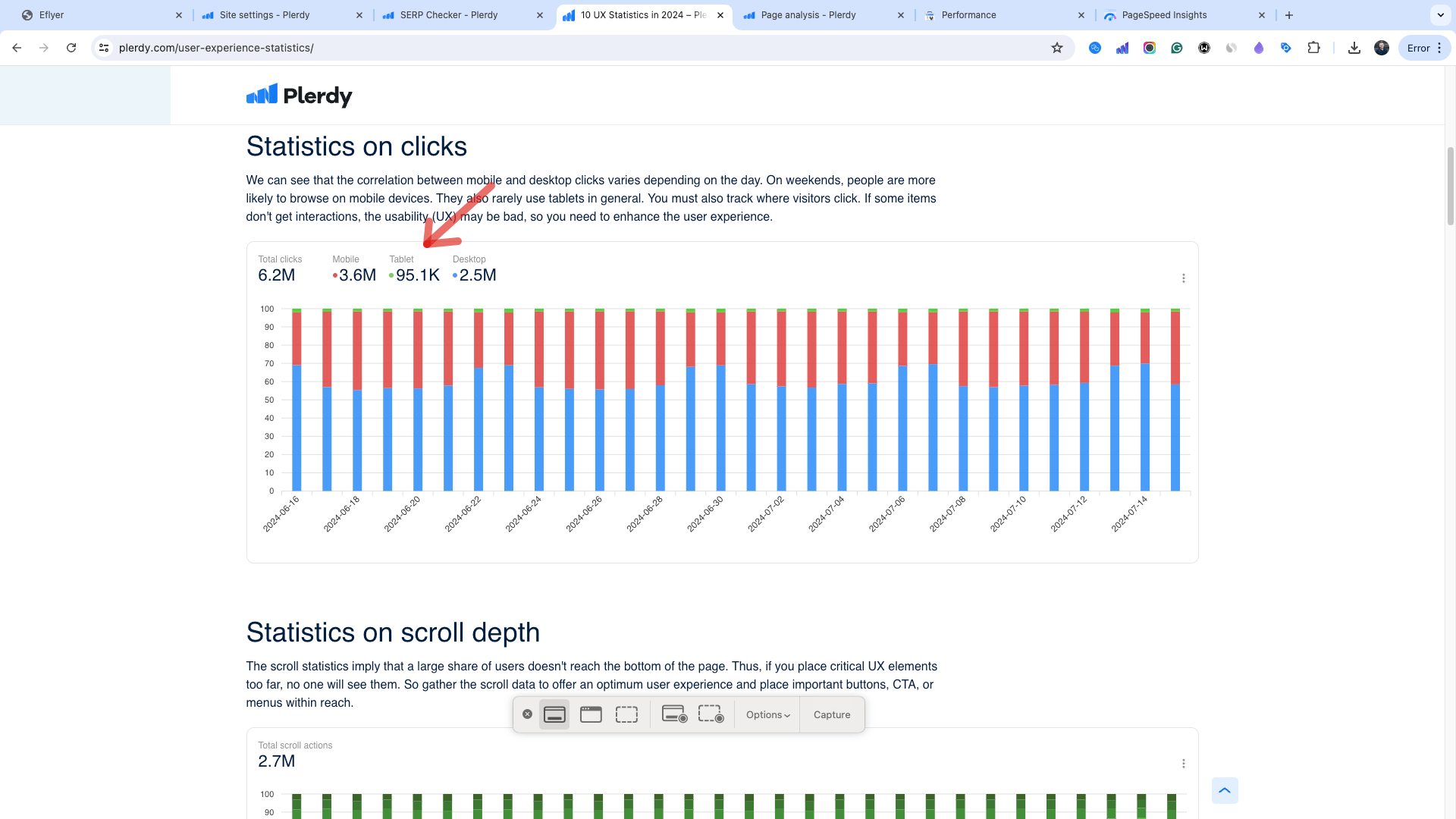
Alex: Oh, that really surprised me! Do all users click on the site?
Andrew: Here’s where it gets even more interesting. Almost 48% of the visitors don’t click anything during their session. They might just scroll, move the cursor around, or even leave the site. This shows potential issues with engaging users or even with how key elements are placed on the page. So, this needs to be analyzed.
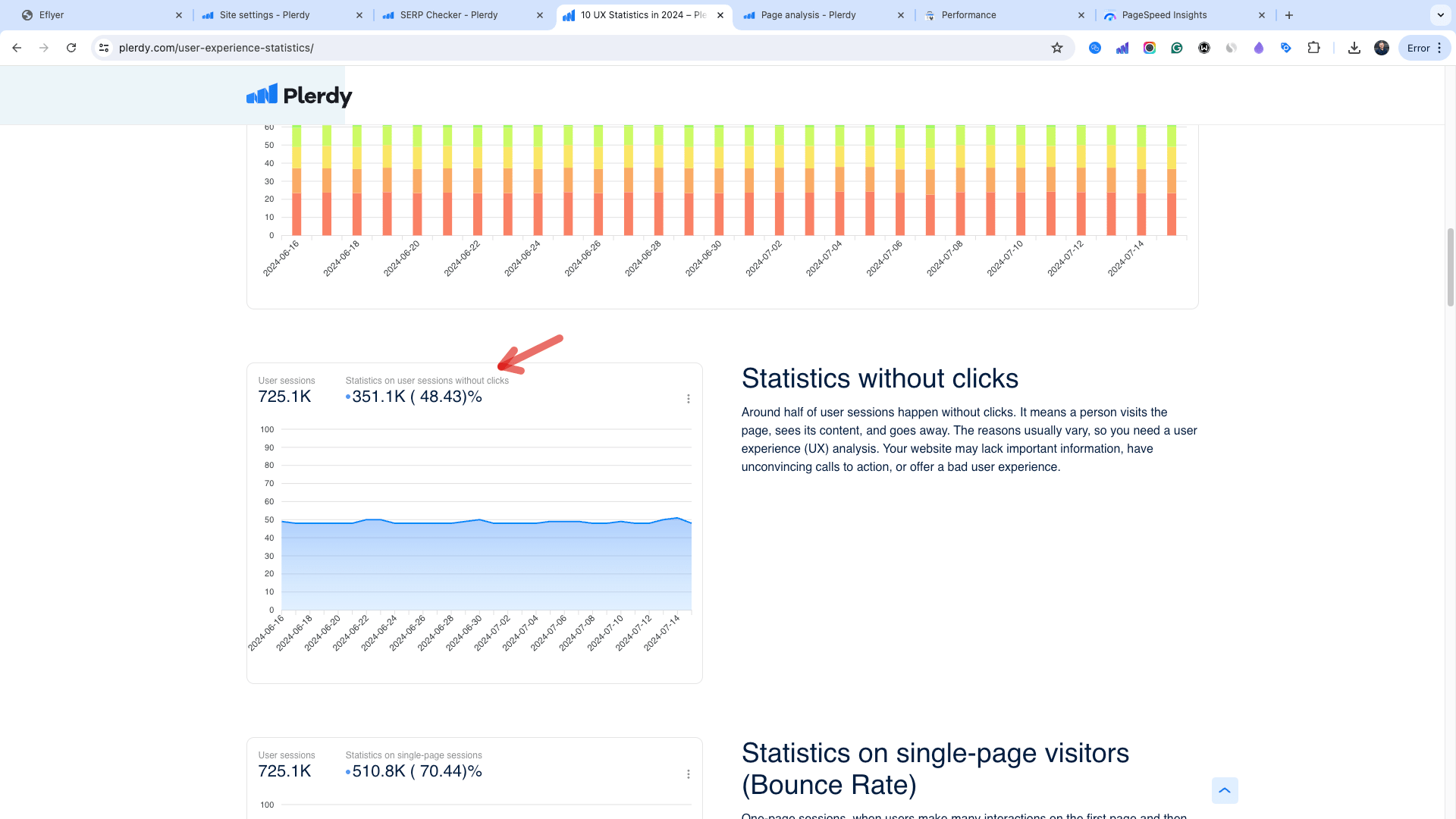
Alex: Hmm… interesting. Does the user go to another page?
Andrew: Another important metric is the percentage of visitors who stay on just one page. Our data shows that this is almost 71%! That’s a very high bounce rate, which could signal that the site doesn’t meet users’ expectations or doesn’t motivate them enough to interact more.
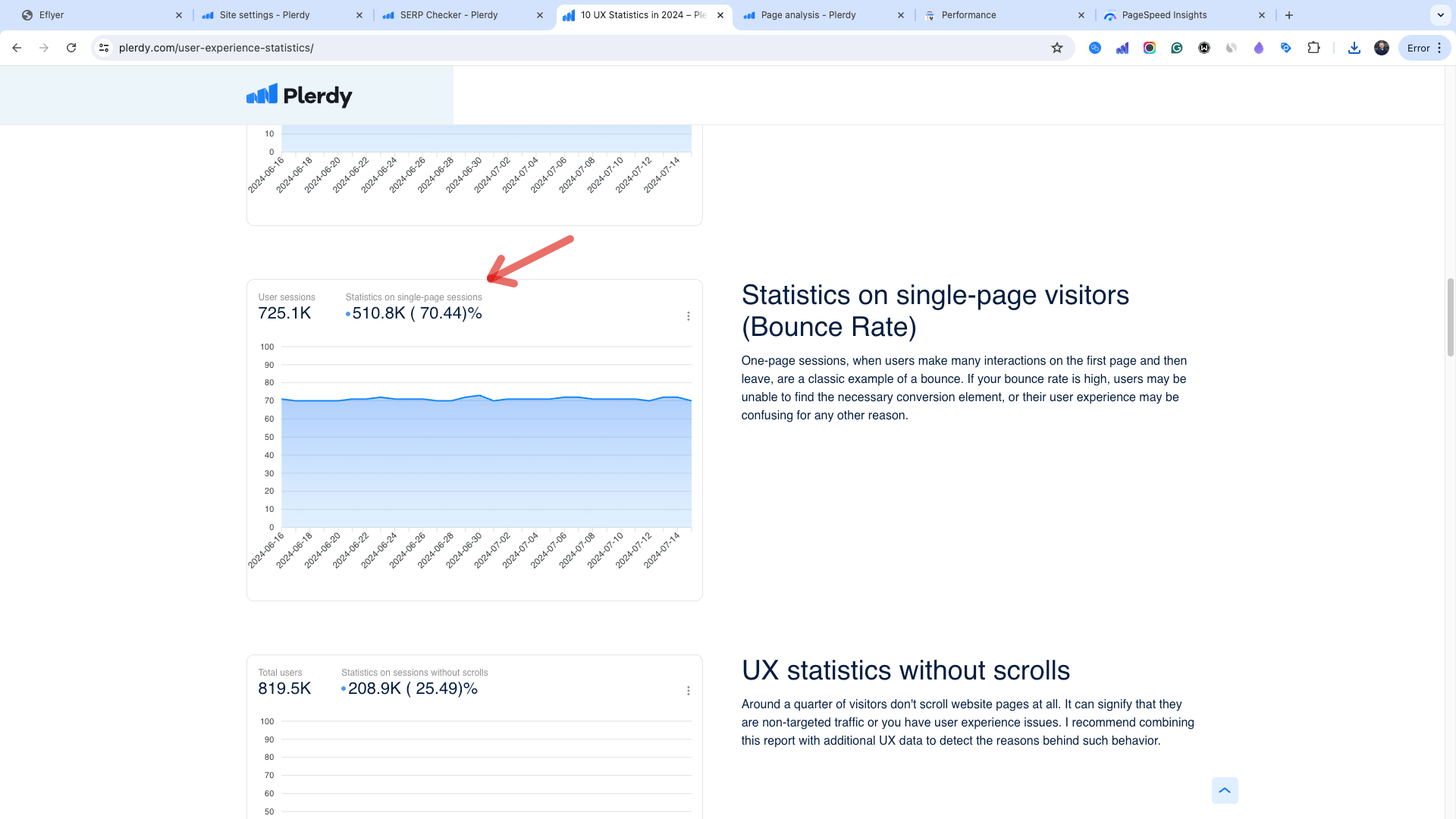
Alex: Like we talked about in the previous video, long pages aren’t that great, right?
Andrew: Yes, exactly. Oh, here’s another interesting fact. About 25% of sessions have no scrolling, which suggests that users didn’t find what interested them in the initial part of the page. However, about 14% of sessions have users scroll all the way to the bottom, which could be a sign of interest in the content at the bottom.
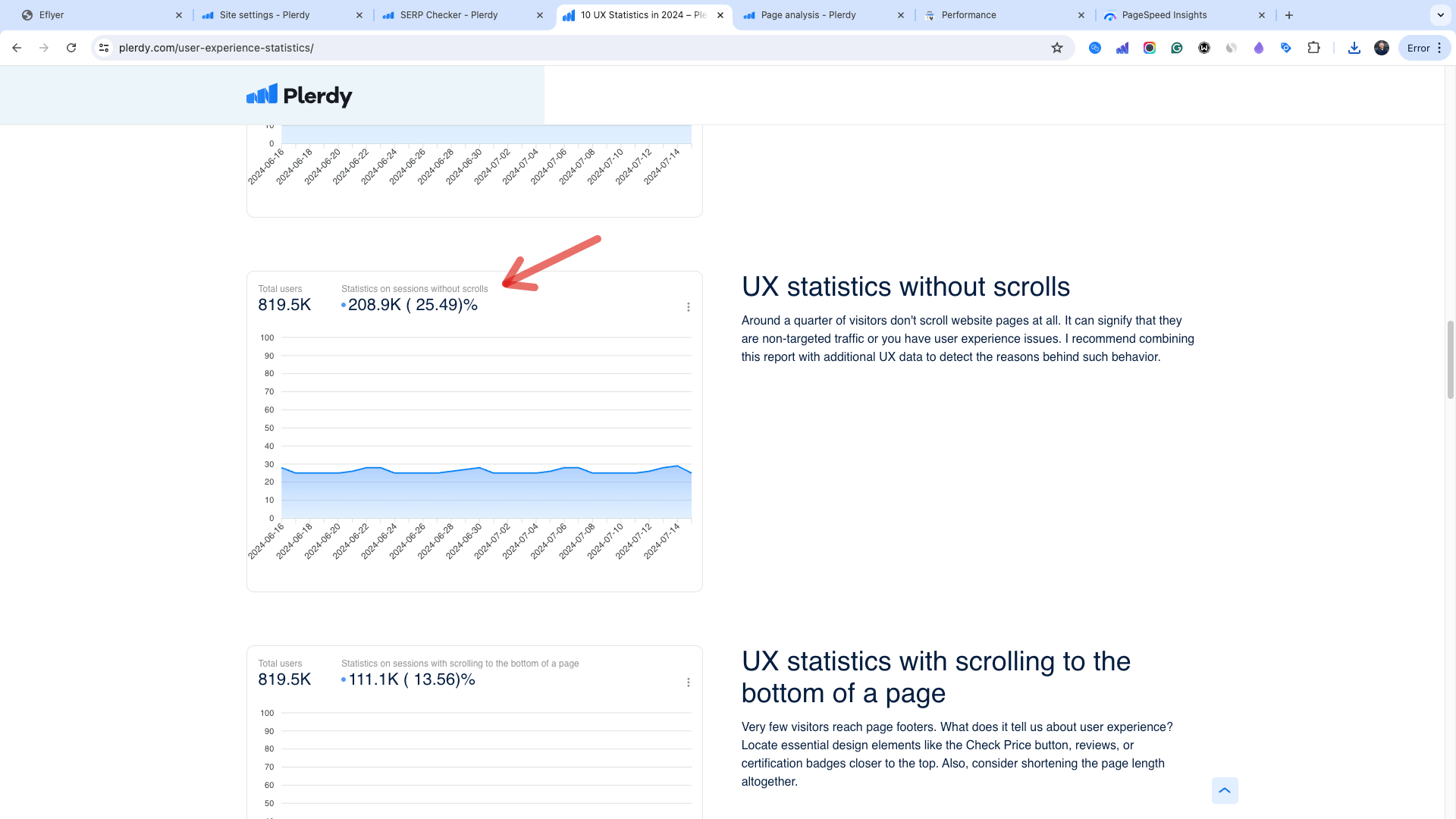
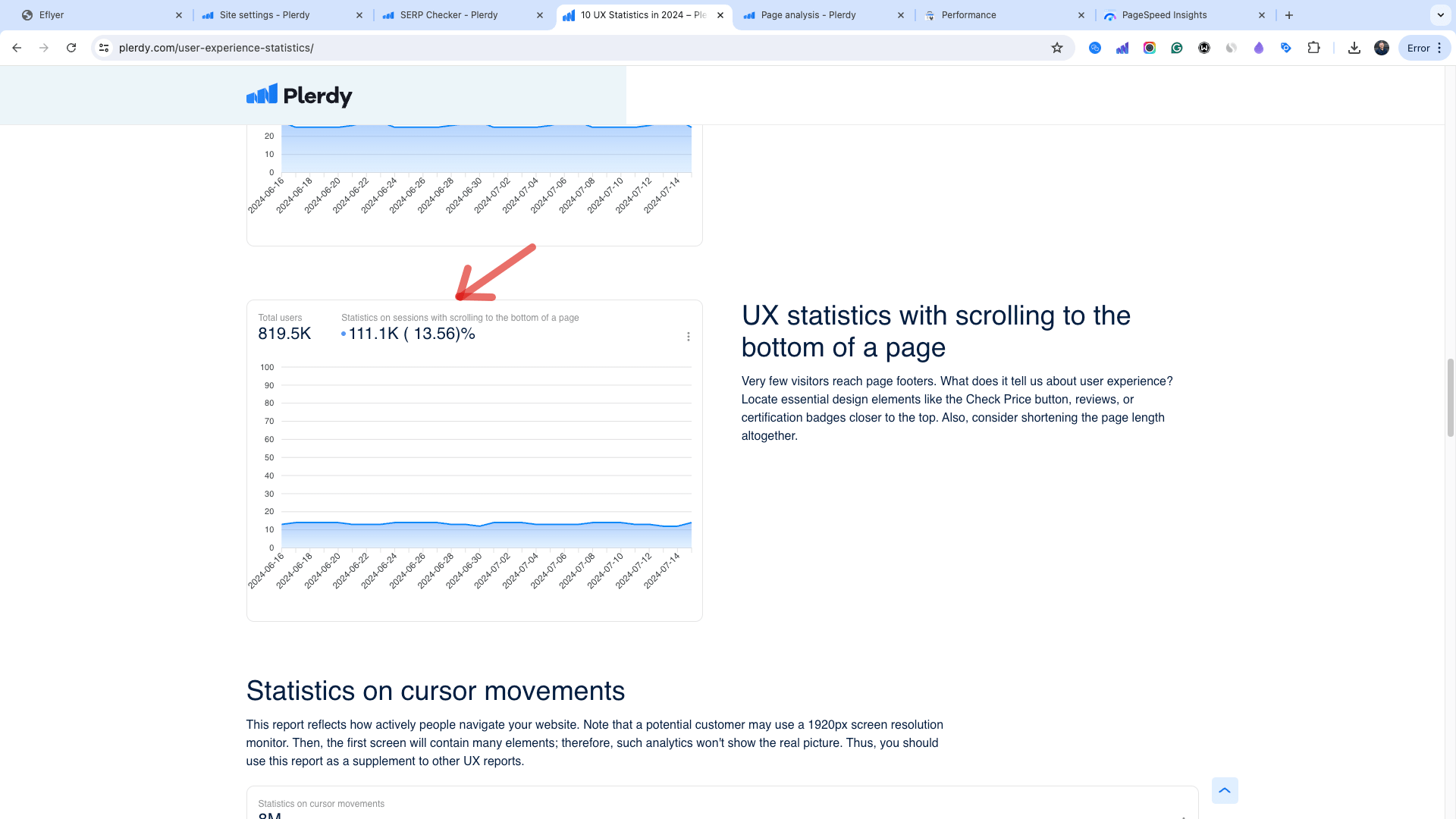
Alex: These insights really opened our eyes! If you want to dive deeper into your website’s stats and improve UX, check out the link in the video description.
At last
UX analysis using Plerdy’s specialist statistics reveals the subtleties of user interactions, so offering a priceless view of the success of your website. The knowledge gained from more than a million user experiences exposes often missed important trends and behaviors. From great bounce rates to little contacts, the data reveals possible unmet needs and chances for improvement. By means of these insights, we hope to convert statistics into practical plans that improve the user experience, increase involvement, and finally propel success. Adopting UX analysis guarantees that your website not only satisfies but surpasses the needs of the digital scene of today, not only helps you to adapt to user expectations but also anticipates them.
